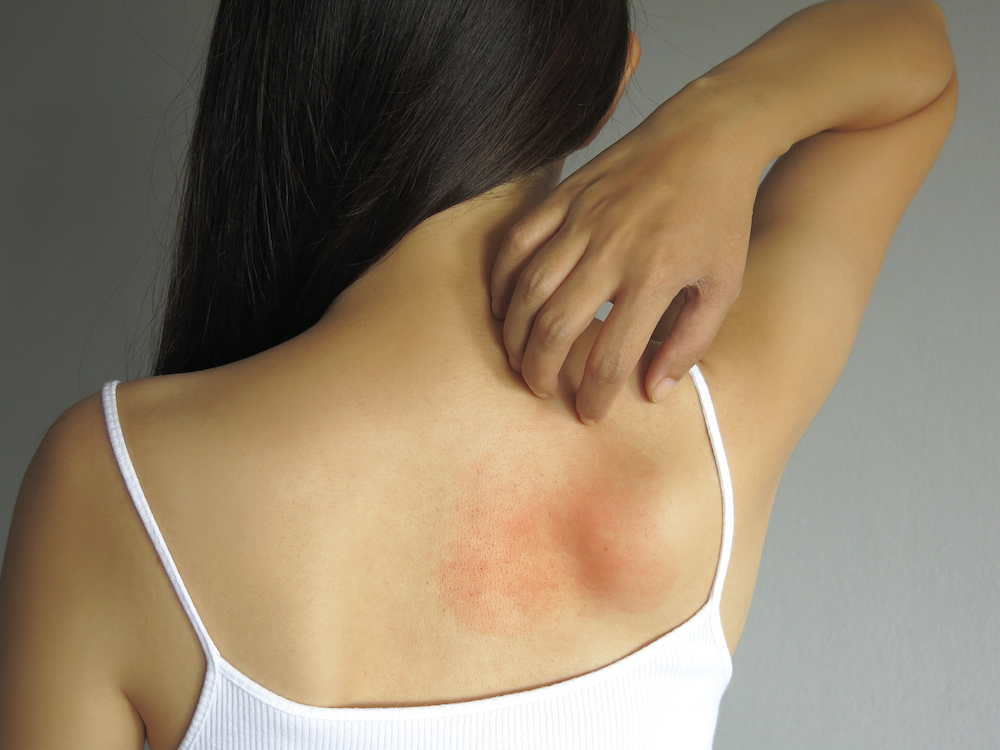How to Avoid Heat Rash

Warmer weather is here! And in the South, humidity rates are rising. For anyone who spends time outdoors, the heat, humidity and sun exposure can cause some serious health and skin concerns if you do not take precautions. While sunburn and its potential to increase your chances of skin cancer is known to many people, fewer people consider the dangers of heat rash.
Heat rash can be experienced by people of any age, but is more often seen in children. Read on to learn about how heat rash develops, how to identify it and what steps you should take if you or someone you love is experiencing heat rash.
What is heat rash?
Heat rash is also known as prickly heat or miliaria. It is commonly found in infants and small children who have less developed sweat glands than adults. When they get hot and begin to sweat, the sweat can be too much for their glands to handle, causing a clog. The sweat becomes trapped underneath the skin causing a red and bumpy rash.
Because of this, adults will get heat rash much less frequently, but it is still possible in hot and humid conditions or when an adult is wearing too many layers or tight fitting clothing.
Causes of Heat Rash
Heat rash is due to hot or humid conditions. In most cases, the rash occurs because sweat has become trapped under the skin, resulting in inflammation. Heat rash is more common in tropical climates that experience hot and humid weather.
Children and adults can experience heat rash when they’re wearing tight fitting clothing in hot and humid conditions. It can also be caused by wearing too many layers that trap heat and sweat.
Athletes who compete outdoors may experience heat rash from physical activity in hot and humid conditions.
Symptoms of Heat Rash
Heat rash can be itchy and uncomfortable. It typically looks like a patch of red, small bumps. While it can appear anywhere on the body, it most commonly shows up in folds of the skin in locations such as the neck, elbows, knees, groin or face. It is often called “prickly heat” because it can include a slightly stinging sensation. While the red bumps generally look like small pimples, they can also look like blisters.
There are different levels of heat rash depending on its severity. Your dermatologist will help you identify if your condition requires treatment or if it can be addressed at home. Call your dermatologist and describe your symptoms or schedule an in-office appointment to have your rash evaluated.
Types of Heat Rash
Miliaria Crystallina
Miliaria Crystallina is a mild form of heat rash that generally does not require treatment from a dermatologist. It occurs on the top-most layer of the skin and usually presents as tiny, fluid-filled blisters that can easily be popped by rubbing a washcloth over the skin.
Miliaria Rubra
This form of heat rash is slightly more intense and is generally associated with a prickly sensation. The bumps will generally be red and itchy.
Miliaria Pustulosa
Referred to as Miliaria Pustulosa, this form of heat rash occurs in deeper layers of the skin. It presents with red blisters that have become inflamed. People who suffer from this kind of heat rash may feel more intense sensation and even pain.
Miliaria Profunda
The most severe form of heat rash is called Miliaria Profunda. While it is not common, if you are suffering from symptoms of this kind of heat rash you should seek treatment from a dermatologist. It penetrates deep into the skin and often presents as goosebumps. The bumps you see will often be flesh-colored rather than red or pus-filled blisters.
Buckhead Dermatology of Atlanta, Georgia
If you think you may be suffering from heat rash, it is best to consult with your local dermatologist. At Buckhead Dermatology, Dr. Straughn can evaluate your skin condition and help you come up with an accurate diagnosis. From there, she will work with you to design the most effective treatment plan to get you the results you desire.
Contact Buckhead Dermatology of Atlanta and College Park today to schedule your appointment with our board-certified dermatologist.
